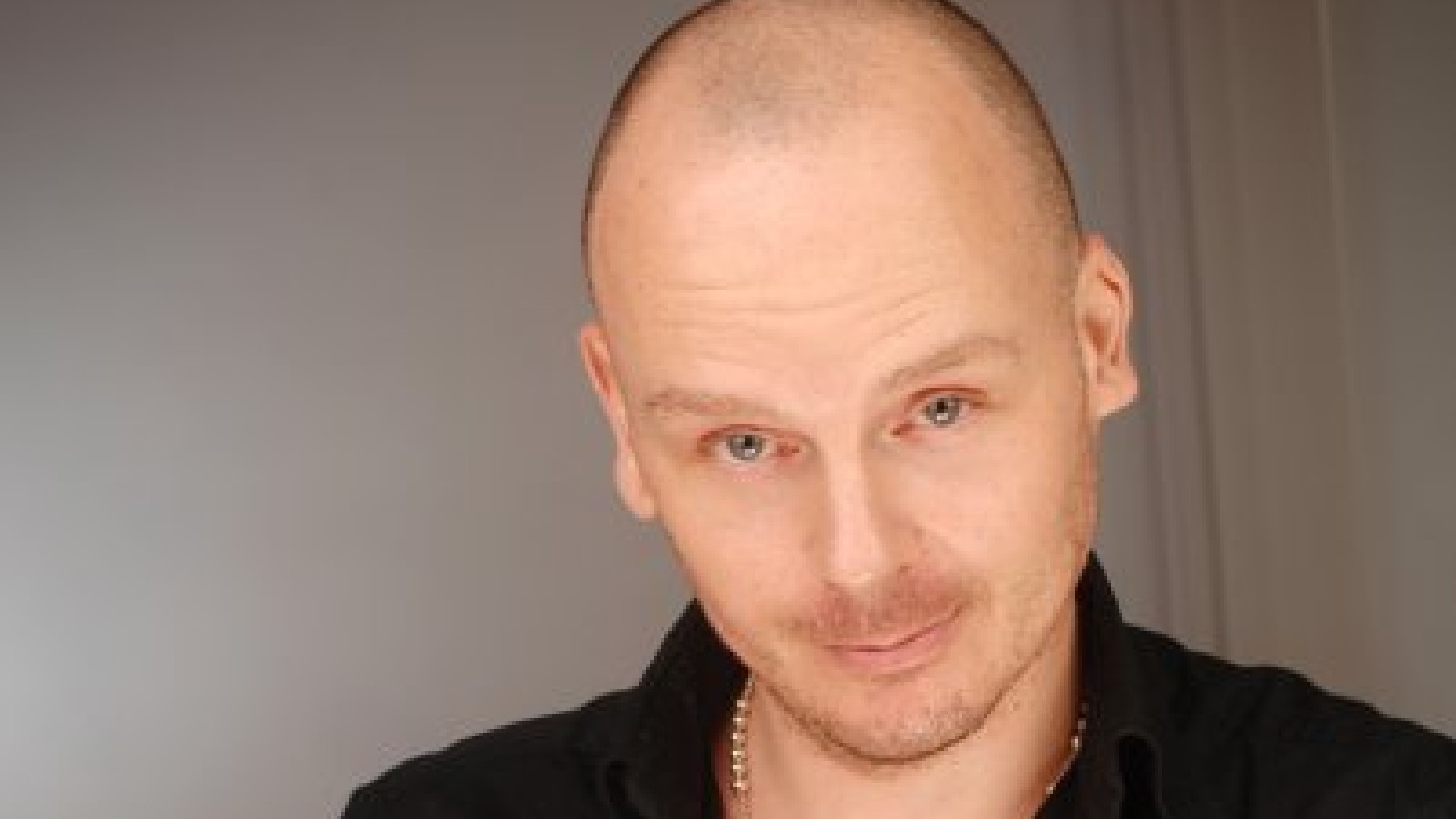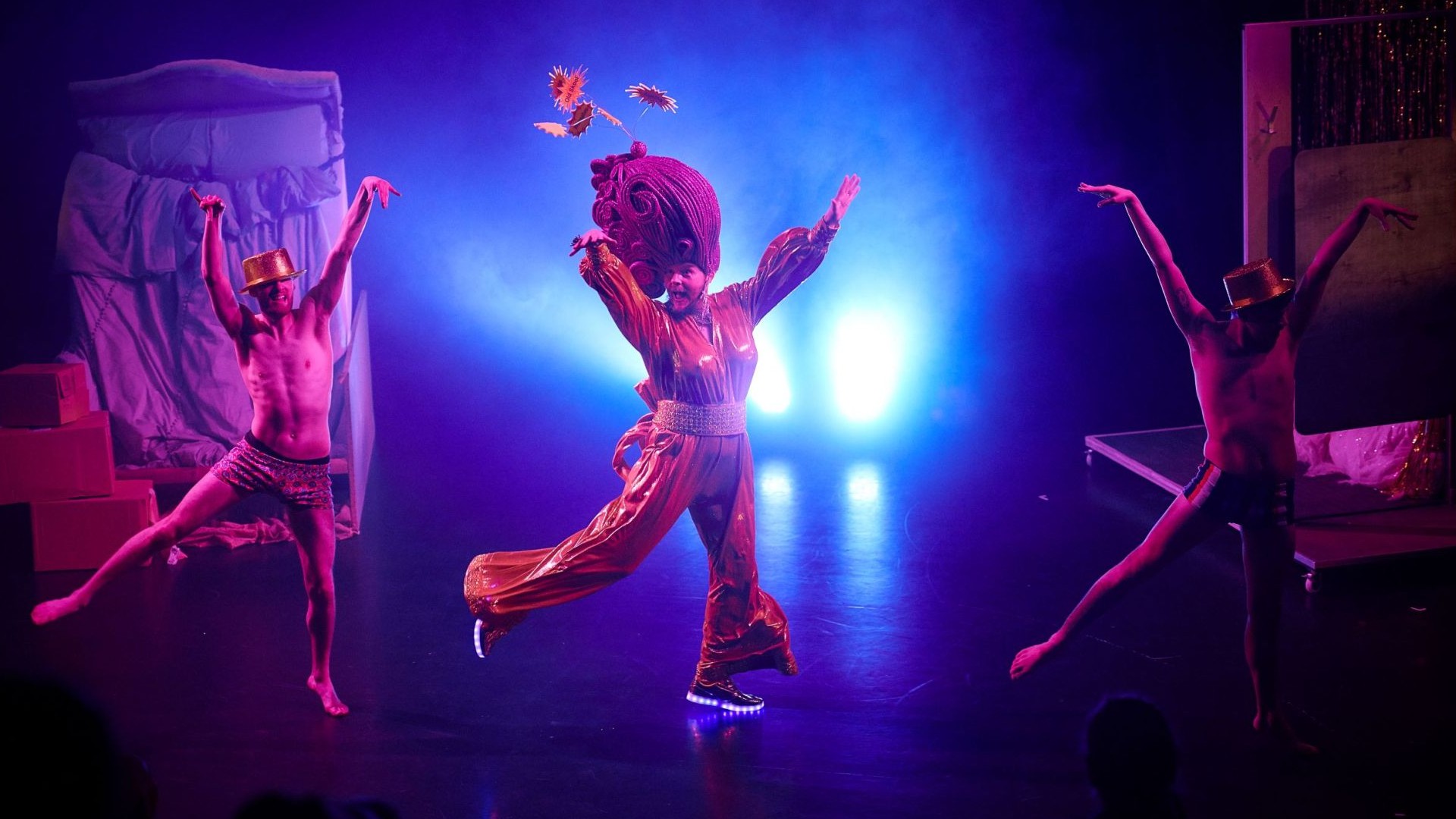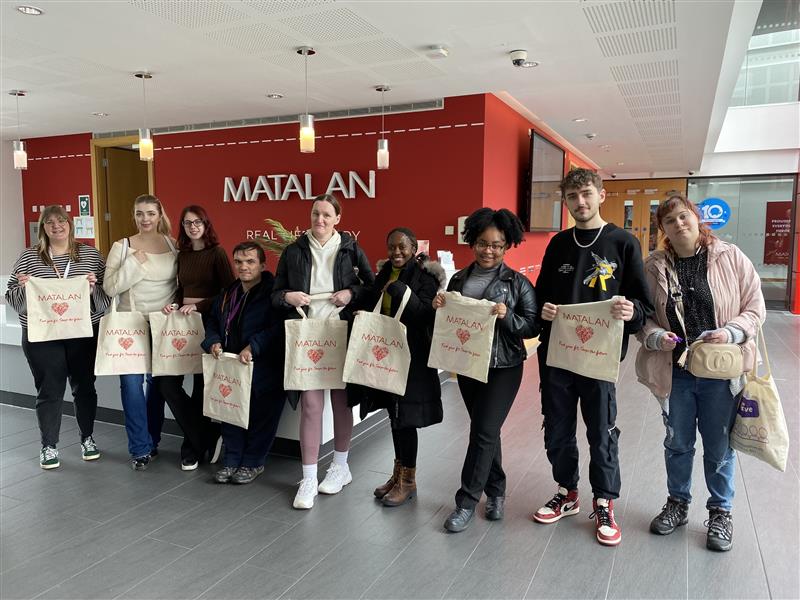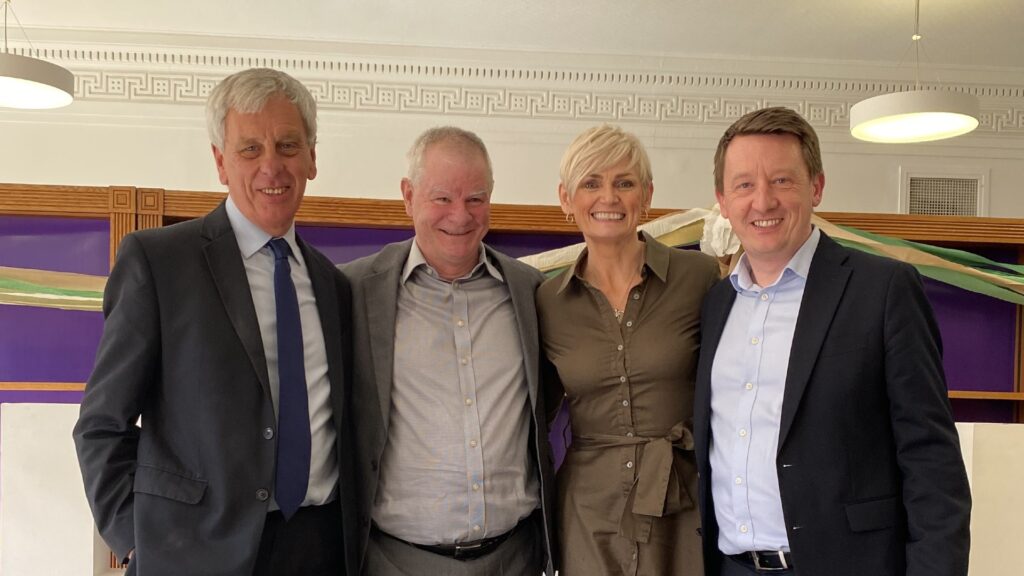Dr Mark Edward describes himself as a “tart-tongued queer”. But he didn’t always. He has been “researching” his identity most of his life, firstly as a young person on a personal journey of self-discovery, then as an academic. As Reader in Creative Arts he is drawn to the idea of self in research – or “mesearch” as he puts it in his recent anthology mesearch and the performing body, which combines reflections and emotions in relation to himself and his performances.
Those performances – and Mark’s identity – included those of his alter ego, the “council house movie star” and drag persona Gale Force. Gale’s delusions of grandeur were one ingredient in a heady tragi-comic cocktail. Now sadly retired, she remains a legend in her own lunchtime.
Mark’s latest publications Contemporary Drag Practices and Performers: Drag in a Changing Scene (2020) and Drag: Histories, Herstories and Hairstories: Drag in a Changing Scene (2020), produced in collaboration with Dr Stephen Farrier from the Royal Central School of Speech and Drama, put drag culture under the spotlight, tracing its history and its place in modern society.

“This is really current debate,” says Mark. “The book covers topics which are not yet widely acknowledged. It looks outside the mainstream to give a voice and a platform to drag performers such as bio-queens (women dressing as drag queens), peripheral drag kinging and queening, and organisations like the Sisters of Perpetual Indulgence. And there’s debate on ‘old school’ versus ‘new school’ drag – the aesthetics are totally different now.”
The books represent another aspect of Mark’s “mesearch”. Where does drag culture fit into the development of Mark’s identity? Like most of us, pivotal moments arrived as a teenager:
“My relationship with drag culture started back in the late 1980s. I used to sneak into a pub called Henry Africa’s in Standish near Wigan, which showcased drag DJs and cabaret acts. I became friendly with one of the drag queens, and she became my drag mother/mentor. We are still close friends to this day. I learnt about the industry and applying make-up, styling wigs, lip-syncing”
Dr Mark Edward
Mark’s personal, social and professional lives have become inextricably entwined. Turning teenage dreams into reality was a leap of faith:
“It was a very hard process. You had to be present to learn the trade as there were no online tutorials in those days, so walking the boards under the watchful eye of your drag mother was the only way to gain experience and critique.”
It stood him in good stead, though:
“Drag allows you to play with identities as it’s in a constant state of becoming. Drag, like identity, can’t be easily placed into a neat box with a label. It helped with my own coming-of-age narratives as a young gay man battling depression and anxiety through rife homophobia.
“Drag gave me confidence and helped to build my resilience and become the tart-tongued queer that I now am.”
Dr Mark Edward

He writes about these seminal experiences in ‘Drag Kings and Queens of higher education’, a chapter from Contemporary Drag Practices and Performers: Drag in a Changing Scene. But Mark’s personal search for a sense of belonging demanded a wider perspective: how does drag culture fit into the jigsaw puzzle of human experience? Mark and Stephen Farrier’s books reveal a culture that cuts deeper than the appearance of the occasional drag act on tv:
“People look at RuPaul and think that’s what drag is but he’s only one lens of drag culture, there’s much more to it, there’s a whole political activism element which is so important.” “Drag history/cultures is not easy to unpack and map. The lineages are like Alice in Wonderland falling down the hole – many tunnels and bends, and arriving at many various and wide-reaching destinations. In Drag Histories, Herstories and Hairstories we refer to it as a ‘sequin method’ where some sequins shine brighter than others and their stories appear more illuminated yet there are many sequins that make up the whole dress but are often rendered invisible.”
Dr Mark Edward
The two volumes, a first of their kind, ensure that many mainstream and alternative drag practices and performers are preserved in writing, and that drag is acknowledged as “a rigorous art form that lends itself to queer arts making, performance studies, cultural and queer theory, gender and identity, class, feminism, intersectionality, politics.”
It is another step in the acknowledgement of drag culture not only as a major art form, but also a whole way of living for many, many people through many, many eras.
So what’s next for Mark? Ideas for the next book are always bubbling under, but he remains a performer at heart, and his journey of self-discovery remains open-ended:
“My latest autobiographical work What Have YOU Done To Deserve This?, commissioned by the Arts Centre at EHU, focuses on toxic masculinity, homophobia, drag culture and classism. I’ve also been invited to perform in a full-length theatre production focusing on historical drag.”
And what has a life of mesearch, whether that’s as Mark or Gale or whoever, revealed:
“Do not let the voices of doubt in your head stop you from achieving the best version of you. Life shrinks or expands according to your belief in self and capability to venture out in the world.”

Find out more about the courses we have to offer in dance, drama and musical theatre at Edge Hill by visiting https://www.edgehill.ac.uk/departments/academic/english-and-creative-arts/creativearts/dance-drama-musical-theatre/. You can also book to attend one of our open days, or request a prospectus.






July 13, 2022


